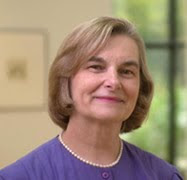Coming into Jerusalem on the drive from the airport in Tel Aviv, I was struck by the terrain-- so rocky, so much a place of hills and valleys. I heard echoes of so many of the psalms in my head. It seems that almost all of the sacred places and the spaces within them are about rocks and stones and the tops of hills.
In the Church of the Holy Sepulcher we entered and turned right to climb the steep and slippery stone stairway to the chapel said to mark the spot where Christ was nailed to the cross. Beneath an elaborately decorated altar pilgrims knelt to touch the space in the rock beneath that was Golgotha. Wall to wall people crowded through that small dark space down another well worn steep stone stairway to the slab on which Jesus was wrapped and shrouded. This place too was touched and venerated. Around the corner the hours long line formed to enter the place where Jesus was laid in a tomb. Inside the tomb is the slab on which Jesus was laid to rest. It is now surrounded by an elaborate chapel into which only 5 people at a time are allowed to enter. We did not wait in that line but made our way to the wall behind the chapel where there were tombs cut into the rock--much more as I see in my mind's eye when I hear the Good Friday gospel read.
Also in the Church of the Holy Sepulcher is the marker--it's the picture that looks like a toadstool-- that marks the rock that is the center of Jerusalem, the center of the world.
We returned to where we had begun our waiting in line at the beginning of the day to wait again in line to ascend to the mosque and the surrounding spaces--all considered to be the sacred space. The line re-opened at 12:30 and the last of our group made it through security before the guards closed it. We were able to hear from our Palestinian guide,Husam, the religious and political history of the third most sacred space in Islam--at the top of a mountain. The incredibly beautiful temple structure with its golden dome and intricate blue mosaic is inaccessible to visitors. As Husan gathered us in front of the temple, the guards were urging us to leave.
The next stop was lunch at a restaurant that has been in the Market area and run by members of the same family for 60 years. It was just across the cobbled street from the Fifth Station on the Via Dolorosa. The cobblestone street is tough walking and we saw one person making his way through the way of sorrows carrying a cross.
We left the teeming market area through Damascus Gate--the largestnof those in the wall surrounding the city to board the bus to ride up more hills to Gethsemane, the Mount of Olives, and the Church of the Ascension. More rocks and hills.
For me, Gethsemane--the Garden of Olives--was among the most moving sites of the day. The olive trees are hundreds of years old and still bearing olives. Husam told us of an olive tree elswhere in the country that is 3500 years old--and still bearing. It was not difficult to imagine the story of Christ's agony in the garden here, in this garden.
In the church adjoining the garden is the rock said to be the one on which Jesus leaned as he prayed on the night in which he was betrayed. It was the object of veneration by pilgrims who stood in long lines in the sanctuary of the church.
We boarded the bus to climb to the Mount of Olives and the Church of the Ascension, now a mosque, holy space to both Christians and Muslims. One of the highest places overlooking the city, the area around the Mount of Olives is a very desirable burial place--tradition has it that those buried there will be raised first at the second coming.
We looked down from the mount over the cemetery to a view of Jerusalem at dusk. Husam arranged for a group picture and apparently out of nowhere a camel driver with camel appeared. The brave Kelly got on the shipnof the desert and trotted around the plaza. The owner said it was a very young camel, only six years old and good natured. You could have fooled me. The camel was not smiling.
Subscribe to:
Post Comments (Atom)














No comments:
Post a Comment